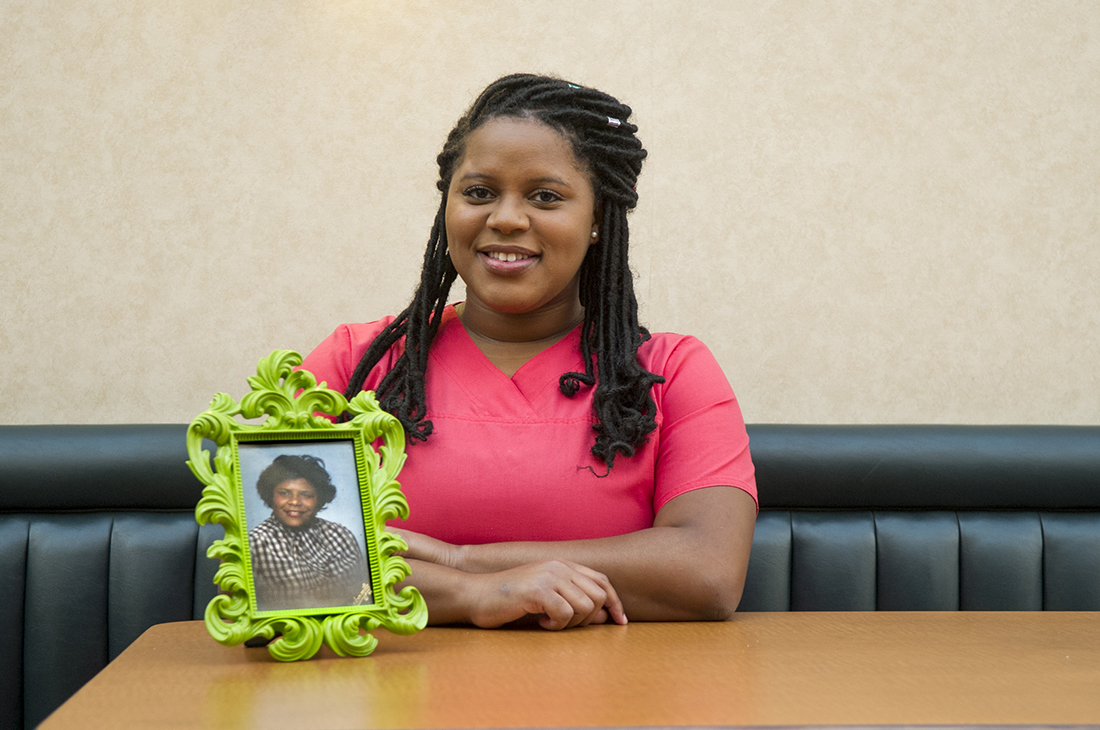A day in their scrubs

By 11th grade, Chelsea Hooper knew she wanted to pursue a career in health care. A member of HOSA – Future Health Professionals at Duncanville High School, she was seriously considering pharmacology. Then came her pharmacy tech rotation.
“I hated it,” Hooper says. “Then I spoke with my dentist — Dr. Natalie Nickerson ’96 — who also was a member of my church. I asked her, ‘Can I follow you around?’”
In the years that followed, whether Hooper was shadowing her dentist while home on breaks from Baylor University, volunteering at her college’s health center or participating in the school’s student predental organization, she didn’t find anything about the profession that turned her away.
It was participation in the six-week Summer Predental Enrichment Program in 2014 that turned her toward Texas A&M College of Dentistry. If she needed a quick recap of a certain subject learned that day, she’d knock
on the door of Dr. Alicia Spence ’12, SPEP director and clinical assistant professor in restorative sciences, who was quick to help. If a pick-me-up between classes was in order, Sheryl Hornback, educational specialist in student development and multicultural affairs, was always ready to offer a snack, sometimes without even being asked.
“That’s one of the best things about this institution, the family-oriented environment,” Hooper says. “Dental school is hard. It’s going to be hard anywhere you go; just little stuff like having teachers and other dentists willing to say, ‘Yeah, come in, let me help you with that,’ that makes you think, ‘This professor is just as invested in my future as I am.’ That to me is the biggest reason you would choose a school.”
Nearly two months into her second year at the College of Dentistry, Hooper shares what got her through her first year of dental school, her unofficial role among classmates — and their canine companions — and the source of her longtime connection with our Dallas campus.
Hometown: Duncanville, Texas
Undergrad institution: Baylor University, business and biology double major
Dental school survival strategy: Relying on family. And when I say family, I don’t just mean mom and dad; talking to other students or talking to faculty. Even as far as didactic courses, I’ve been at my professors’ office doors saying, “Can you run this or that by me?”
Favorite energy food: I’m really into tea: herbal teas, Earl Grey teas, black teas; I drink at least a cup of tea every morning. No sugar, no honey.
Best way to unwind after a long day in lecture, lab or clinic: I like cooking — everything. I don’t really care if people really like it, so to speak, just as long as people want to eat my food; when people come to the barbecue and don’t really care what it is as long as you made it.
I feel like I’m also the unofficial class dog sitter. I have dog-sat for a few of my classmates’ dogs. I take them out walking. I treat them like kids. I take their dogs to Klyde Warren, Gloria’s, Sprinkles — they also have cupcakes for the dogs.
Literally the week before school started, I had two classmates at the same time ask, “Hey, can you watch my dog?” They’re always sending me videos of their dogs.
Dental school aha moment: I think I have had quite a few even though I don’t have my own patients. Through the school we’re able to shadow extramural and intramural rotations. We had a patient who had needed some extractions from OMS. We had to cancel treatment that day because she was on blood thinners and needed to get clearance from the prescribing doctor. When the faculty member was talking to the D4, I felt like at that moment I understood the situation. There have been other instances where clinically, the didactic has truly been important and shows me that the D1 year is hard, but it’s meaningful. The physiological manifests in the clinical.
Goal after graduation: I think there’s a lot to be learned as far as general dentistry, but I don’t know what I will be interested in until I start doing specific procedures.
I’m interested in learning more about forensic dentistry, as far as burn victims and remains recovery. I had some exposure to that in undergrad. It was exciting to me. As far as the closure aspect for families, I think that we need a lot more people trained specifically to identify remains.
What people may not know about you: I used to dance and figure skate competitively.
My mom had breast cancer, and I was 10 when she passed. I would sit with her during chemo — at Baylor University Medical Center at Dallas — and she would promise me every time, “If you sit here quietly, I will take you down to the cafeteria.” It’s still here. That used to be my little reward.
Sometimes if I have a hard day ahead, I just go sit and study in the cafeteria. Sometimes I find it comforting going there, and other times I can’t go. It’s bittersweet, honestly, and I spent so much time here that I feel like my mother’s presence is so close to me while at school, because I have memories in this place.